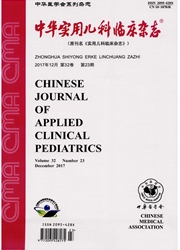

 中文摘要:
中文摘要:
目的建立人脐带间充质干细胞(HuMSCs)来源的诱导性多能干细胞(iPSC)系。方法以慢病毒载体将OCT4、SOX2、KLF4、c—Myc、NANOG、LIN-286个转录因子转入HuMSCs使其重编程为iPSC。通过形态学观察、多能细胞特异性标志检测、碱性磷酸酶(AKP)染色、核型分析、拟胚体形成、体内成瘤实验鉴定获得的iPSC。结果慢病毒感染后第4天,HuMSCs逐渐变成类圆形,第10天开始出现不规则细胞团,第14天出现较大的细胞团,约1.25%的细胞重编程为iPSC。建系后iPSC呈典型的克隆状生长,边缘清晰,内部细胞细小,排列紧密;AKP染色阳性;表达多能性相关基因及胚胎干细胞特异性蛋白;细胞核型正常(46,XY);体内外均能向3个胚层方向分化。结论慢病毒携带OCT4、SOX2、KLF4、c-Myc、NANOG、LIN-286个因子能将HuMSCs高效诱导为完全重编程的iPSC。
 英文摘要:
英文摘要:
Objective To establish and identify the induced pluripotent stem cell(iPSC) line reprogrammed from human umbilical cord mesenchymal cells(HuMSCs). Methods HuMSCs were cultured by adhesion method,and OCT4, SOX2,KLF4, c-Myc, NANOG, LIN-28 were transfected into HuMSCs with lentiviral victor to reprogramme HuMSCs into iPSC. Morphological observation, pluripotency genes ( SOX2, TDGF1, THY-1, OCT4, REX1 and TERF1 ) expression, alkaline phosphatase detection, karyotype analysis, embryonic stem ceils(ESC) specific proteins( NANOG, OCT4, SSEA-4, TRA-1-81 ) immunofluorescence staining, differentiated into teratomas in vivo ( inject the iPSC into SCID mice ) and embryniod bodies in vitro were performed to exam the pluripotency of the iPSC. Results Four days after being infected by lentivirus,the HuMSCs became round-shape; 10 days after infection, some embryonic stem (ESC)-like colonies appeared. Fourteen days after infection, picked up the regularly shaped colonies and cultured several passages. About 1.25% HuMSCs were reprogrammed into iPSC. The iPSC presented clone-like growth like ESC. All the cells were positive to alkaline phosphatase staining and expressed the pluripotency genes. The iPSC also expressed the ESC specific proteins, and karyotype analysis showed normal chromosome caryotype (46, XY). Furthermore, the iPSC could form embryoid bodies in vitro, expressed alpha fetoprotein ( AFP), smooth muscle actin ( SMA ) and β-tubulin. The iPSC could alsoform teratomas in vivo. Conclusion OCT4, SOX2, KLF4, c-Myc, NANOG, LIN-28 can reprogram HuMSCs into iPSC efficiently.
 同期刊论文项目
同期刊论文项目
 同项目期刊论文
同项目期刊论文
 Immunological characteristics of human umbilical cord mesenchymal stem cells and the therapeutic eff
Immunological characteristics of human umbilical cord mesenchymal stem cells and the therapeutic eff Malignant Transformation Potentials of Human Umbilical Cord Mesenchymal Stem Cells Both Spontaneousl
Malignant Transformation Potentials of Human Umbilical Cord Mesenchymal Stem Cells Both Spontaneousl 期刊信息
期刊信息
